More commonly known as Yarrow, Achillea is a beautiful plant that belongs to the diverse Asteraceae family. Yarrow’s finely textured, fern-like foliage creates a soft, feathery backdrop, while its flower heads, composed of dense clusters of tiny blooms, add a pop of vibrant color. A fun fact about Yarrow is that it’s used as a natural dyeing agent.
In the garden, Achillea is a powerhouse perennial that thrives with minimal care; it is drought tolerant and prefers full sun. Yarrow is also a fantastic companion plant; it attracts beneficial insects like ladybugs and wasps that help control pests, and repels mosquitoes with its aromatic foliage.
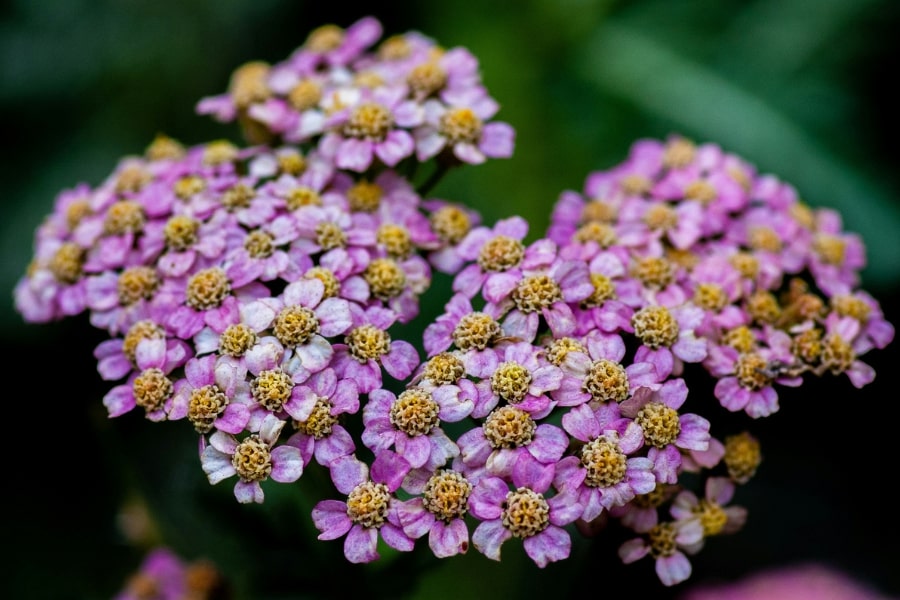
Our Selection of Achillea
Achillea is available from early Spring through late Fall, providing vibrant color and reliable performance throughout the growing season. This year (2025) we are growing 13 varieties of Achillea at Martin Garden Center, in 4″ Containers. 6″ and 1-gal containers will also be available on occasion. We will carry these varieties this year, but we cannot guarantee that we will have them at all times. Our Selection of Achillea (Yarrow) for Spring 2025 includes:
- Little Moonshine
- Moonshine
- Milly Rock Rose
- Milly Rock Red
- New Vintage Series
- Paprika
- Peter Cottontail
- Pretty Belinda
- Terracotta
We also receive Achillea from our regional vendors. Common varieties include Pomegranate, Saucy Seduction, and Strawberry Seduction.
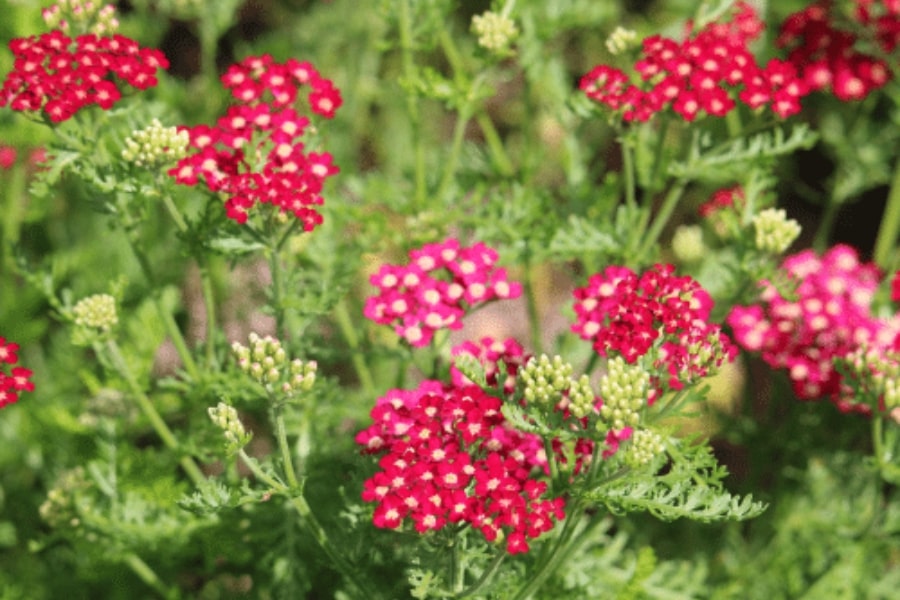
Growing and Caring For Achillea
Achillea prefers well-drained soil, though it is remarkably adaptable to various soil types, including sandy or loamy soils. The plant thrives in full sun, although some varieties can tolerate light shade. Its resilience extends to temperature fluctuations, making it suitable for gardens in temperate and subarctic climates.
Regular watering during its establishment phase is essential, but once established, the plant can tolerate periods of drought. Fertilization should be minimal, as excessive nutrients can lead to leggy growth and reduced flowering. Deadheading spent flowers prolongs the blooming period and encourages the development of new blooms. Dividing mature clumps of Yarrow every few years helps maintain plant vigor and prevent overcrowding.
Achillea is relatively pest-resistant, but it’s still a good practice to monitor for any signs of pests and address them if necessary. Spacing Yarrow properly helps prevent powdery mildew, which may arise in our humid climate in the Upstate. If powdery mildew plagues your yarrow, consider watering at the base or an organic solution for preventions such as copper fungicide. One unfortunate issue with Yarrow is that if it crashes, the recovering foliage will yellow.
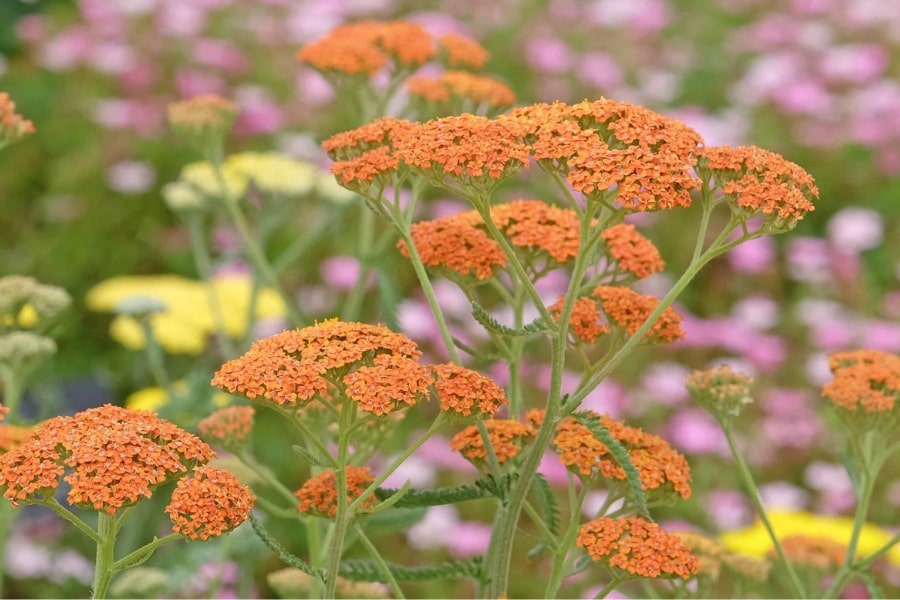
Leaves and Flowers
Achillea’s foliage is characterized by its finely divided, fern-like appearance, contributing to the plant’s delicate yet textured allure. The leaves are typically aromatic, exuding a faint fragrance when touched or brushed against. These feathery leaves form a lush basal rosette contrasting beautifully with the plant’s upright flower stalks.
The flowers steal the spotlight with their captivating diversity. They form flattened clusters, often referred to as “umbels.” The individual flowers are small and composed of multiple tiny florets, creating a tapestry of colors and shapes. Achillea blooms come in an array of shades, including white, pink, red, and yellow, offering a visual symphony that can be seamlessly woven into various garden designs. Many of the hybrid types boast all season long flowering, but deadheading is a must for recurring blooms.
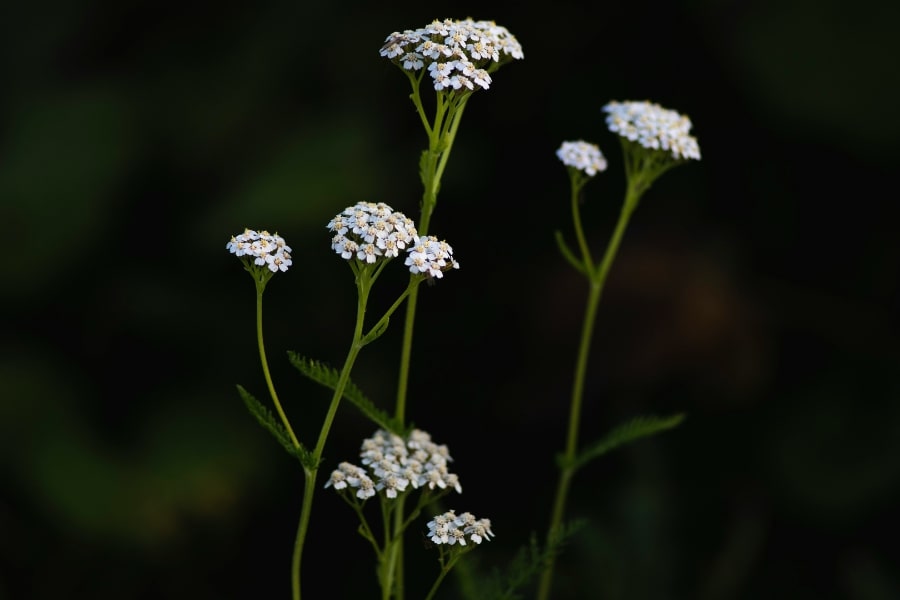
Uses in the Garden
Achillea is also highly versatile and can be used in various ways in the garden. For example, it is often used as a border plant or as a filler in rock gardens. The plant can also be used to add color and texture to mixed perennial beds. In addition, Achillea is often used in cottage gardens and meadow gardens, where it adds a natural and wildflower-like look.
Achillea is also an excellent plant for attracting wildlife to the garden. The plant’s nectar-rich flowers attract pollinators, including bees, butterflies, and moths. These insects, in turn, attract birds to the garden, making it a great place for nature lovers to observe wildlife up close. When planted in climates that mimic its natural setting (Zones 3-7), gardeners should take measures to Prevent Yarrow from Becoming Invasive.
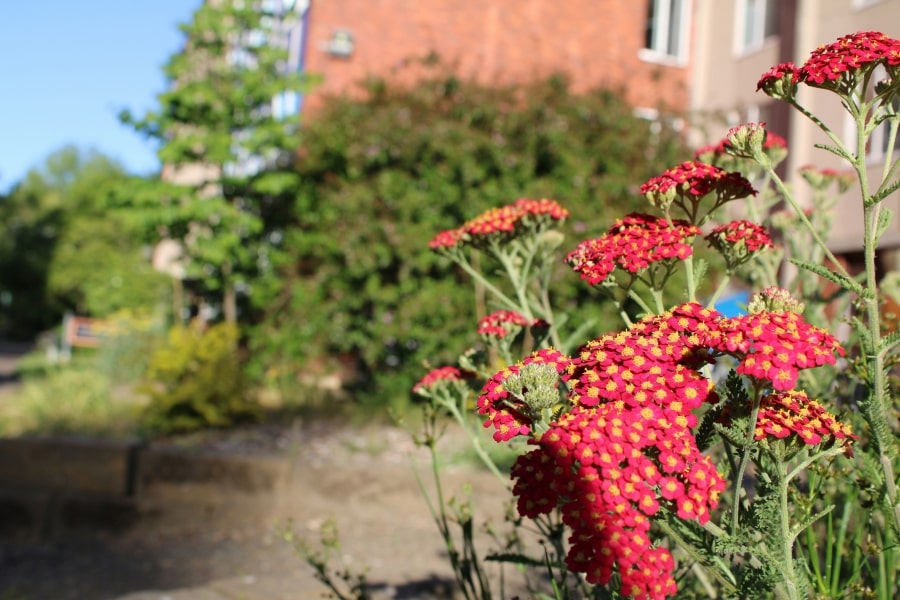
Frequently Asked Questions
Is Yarrow Deer Resistant?
Yes, Yarrow (Achillea) is often considered deer-resistant. The aromatic nature of yarrow foliage, along with its bitter taste, tends to deter deer from feeding on the plants. While no plant can be considered completely deer-proof, yarrow is typically less attractive to deer compared to more palatable options. This makes yarrow a good choice for gardens in areas with deer populations.
Is Yarrow Edible?
Yes, Yarrow is edible and has a history of culinary and medicinal use. The leaves and flowers of Yarrow are edible and can be used in salads, soups, or as a garnish. They have a slightly bitter and peppery taste. Yarrow leaves and flowers are often used to make herbal tea. The tea is believed to have various potential health benefits, including aiding digestion and acting as a mild sedative.
When foraging for Yarrow, it’s crucial to ensure proper plant identification to avoid confusion with toxic plants. The characteristic feathery leaves and flat-topped clusters of small, white, or pink flowers are distinctive features of Yarrow.
Is Yarrow Invasive?
Yarrow is not considered invasive in the same way as some highly aggressive plants, but its ability to spread should be taken into consideration. Yarrow is known for its rhizomatous growth habit and prolific seed production, which can result in it spreading and naturalizing in a garden. The plant’s adaptability and resilience can lead to it spreading beyond its original planting site, particularly in areas with favorable growing conditions and limited competition.
When Does Yarrow Bloom?
Yarrow typically blooms in mid-spring to early summer, generally from May to July, depending on the specific climate and geographic location. In the upstate, we enjoy yarrow blooms as early as April. The exact timing of yarrow blooming can vary based on factors such as local weather conditions, temperature, and the specific variety of yarrow.
How Tall Does Yarrow Grow?
The height of yarrow (Achillea millefolium) can vary depending on the specific variety and growing conditions, but on average, most yarrow plants range from 1 to 3 feet (30 to 90 cm) in height. Some compact varieties may be shorter, while certain taller cultivars can reach heights beyond 3 feet. Yarrow typically has a bushy and upright growth habit with finely divided, fern-like leaves.
